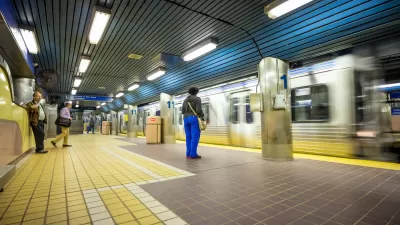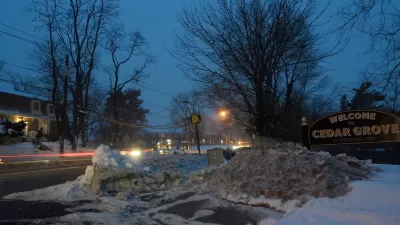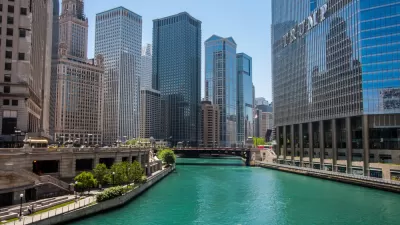Giant video screens and lighting displays are changing the face of buildings, but the content has not caught up to the technology. Peter Hall of Design Institute proposes that these displays could reflect the inner life of the buildings and the city.
"Buildings communicate their function and status through a language of visual signs. A cross on the roof generally signifies a church, a grand arch commemorates a triumph, steel-and-glass curtain walls usually indicate there are offices inside, and a duck-shaped or hot-dog shaped building usually means that poultry or hotdogs are for sale. A more dynamic system of communications arrived in the 20th Century with the first "zipper" sign in New York's Times Square in 1928, an illuminated bulletin board that transmitted the day's headlines: buildings henceforth began to communicate in data flows as well as via bricks and mortar. Today, commercial hubs from Times Square to Seoul are showcases of giant moving graphics that fly across several stories, though more often than not they are advertisements that disregard what is happening within the building itself. What if a sign did not simply tout new movies, sodas, and celebrity babies in one-way feeds, but instead revealed something unique about the building, its occupants, or its environment? What if the building could respond, in real time, to the movement of people, the weather, or the whims of bystanders or behind-the-scenes artists? Digital designers and architects have begun working together to move beyond the facade and give buildings a living skin."
FULL STORY: Living skins: Architecture as interface

Maui's Vacation Rental Debate Turns Ugly
Verbal attacks, misinformation campaigns and fistfights plague a high-stakes debate to convert thousands of vacation rentals into long-term housing.

Planetizen Federal Action Tracker
A weekly monitor of how Trump’s orders and actions are impacting planners and planning in America.

San Francisco Suspends Traffic Calming Amidst Record Deaths
Citing “a challenging fiscal landscape,” the city will cease the program on the heels of 42 traffic deaths, including 24 pedestrians.

Defunct Pittsburgh Power Plant to Become Residential Tower
A decommissioned steam heat plant will be redeveloped into almost 100 affordable housing units.

Trump Prompts Restructuring of Transportation Research Board in “Unprecedented Overreach”
The TRB has eliminated more than half of its committees including those focused on climate, equity, and cities.

Amtrak Rolls Out New Orleans to Alabama “Mardi Gras” Train
The new service will operate morning and evening departures between Mobile and New Orleans.
Urban Design for Planners 1: Software Tools
This six-course series explores essential urban design concepts using open source software and equips planners with the tools they need to participate fully in the urban design process.
Planning for Universal Design
Learn the tools for implementing Universal Design in planning regulations.
Heyer Gruel & Associates PA
JM Goldson LLC
Custer County Colorado
City of Camden Redevelopment Agency
City of Astoria
Transportation Research & Education Center (TREC) at Portland State University
Jefferson Parish Government
Camden Redevelopment Agency
City of Claremont





























